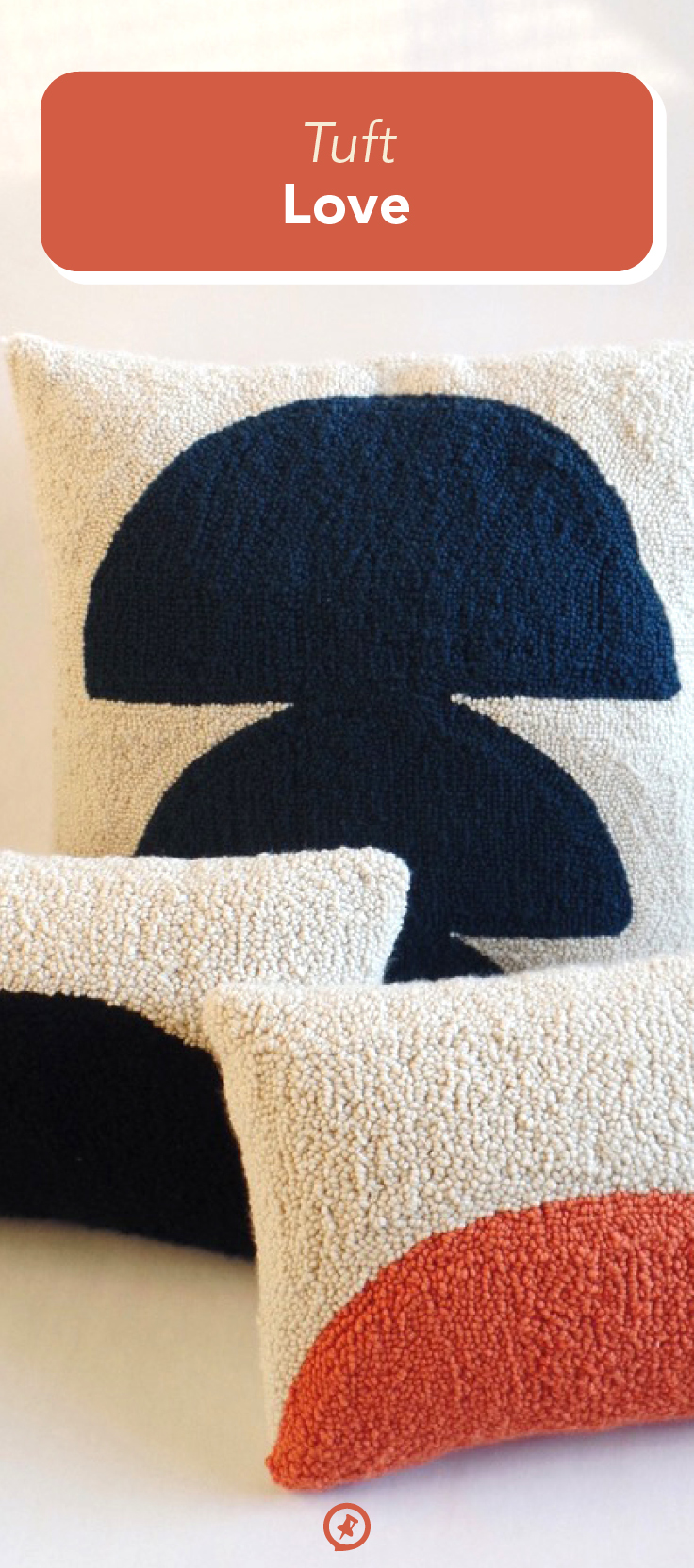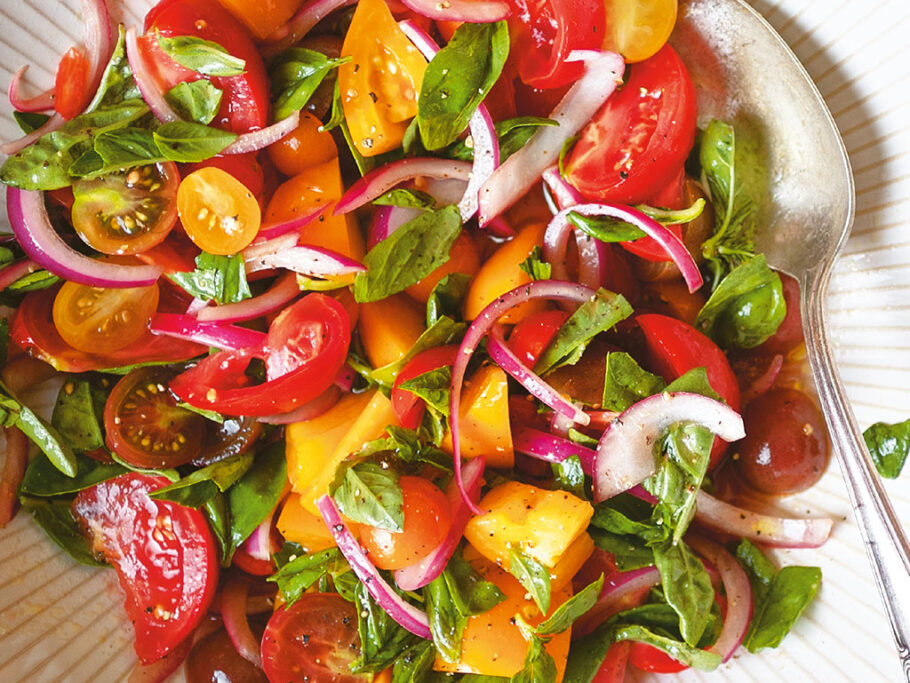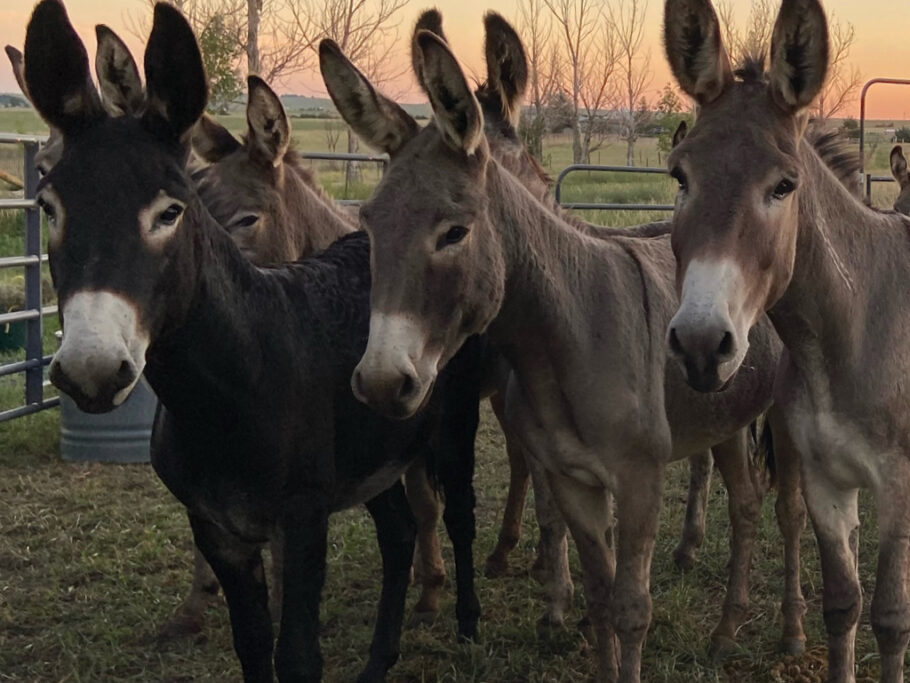Tuft Love
Interview Jennifer Bandley
Photography by Jennifer Bandley
Jennifer Bandley’s lifelong interest in texture, form, and color has led to a business of designing and tufting pillows.
Do you have a background in design or art?
I grew up being creative and making things with my hands. When I got to high school, I started doing ceramics and had an incredible teacher, Mr. Carthew, who helped me to view myself as an artist. I was an art major for a semester in college before I changed majors, but I’ve always prioritized seeking out art and design. 3D mediums have always been especially interesting to me, and I love texture, form, and color. So when I started punch needling [a form of embroidery that uses a hollow-needle tool to punch loops of wool yarn through holes in a piece of cloth to create a design], it felt like a natural introduction to fiber art. I also started dabbling in graphic design when I started Thread Haven as a way to visualize my tufting designs and have grown as a designer since then. My creative practice will definitely be lifelong.

Why did you choose the name Thread Haven?
I really labored over the name of my company because it was important to get it right. I finally landed on Thread Haven. “Thread” represents the pieces I create and the medium I use. “Haven” brings thoughts of home to mind, which is exactly what I hope my pillows and wall pieces evoke—a sense of comfort and contentment. But, even further, the definition of “haven” is a place of safety or refuge. Creating has always been a sanctuary for me through the difficult seasons of life. I hope that my shop sparks a resiliency that is characterized by a desire to create and keep moving forward.
How did you learn to tuft pillows? Where did your interest come from?
I started punch needling by hand when I saw a tool online and thought it seemed like a fun thing to test out. I made my first punch-needle pillow ever in November 2018, at a time when there wasn’t much online about how to punch needle and not many people were selling punch-needle goods. I quickly outgrew using a punch-needle tool and bought a tufting gun, which increased my capacity enormously. Since then, tufting has gone viral and become much more commonplace
(although it’s still very niche). It’s been a fun journey!
Will you briefly walk us through the process?
My process always starts with inspiration and design. I usually gather color inspiration, shapes, etc., and then begin drawing by hand or on my iPad. I have a ton of designs I’ve brainstormed as well, so I usually reference those to give me some direction. I create several iterations of a design and narrow it down once I select yarn colors. Then I project the design on my framed fabric and get tufting. I typically work on pieces in batches so I can fill up my whole frame and then sew and back them.
What is your favorite part of the process? Your least favorite?
My favorite parts of the process are designing and tufting. I also love looking at yarn color combinations and narrowing them down. My least favorite is the finishing of pieces; I always wish that I could only tuft and it would be magically sewn, backed, and finished.
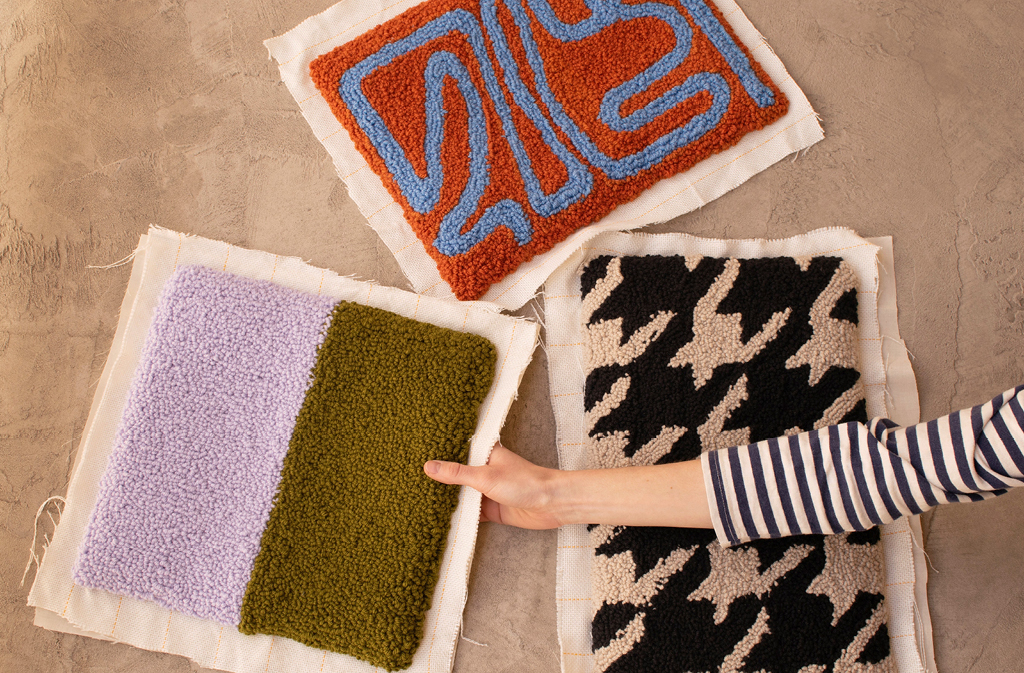
Is there a specific type of yarn used for pillow tufting?
I have used all kinds of yarn, including wool and acrylic. That’s what is so fun about tufting—the options are endless.
What color palettes do you gravitate toward?
I’m drawn to killer color combinations. I also gravitate toward blood orange; I want to use it as a pop of color
in everything.
How do you come up with your designs?
I draw inspiration from all kinds of things, like abstract shapes, tile, architecture, clothing, books, patterns, nature, textiles, and art. I’m always gathering bits of inspiration that then develop and contribute to new designs. Just recently, I made a pastel piece of art for my house and then thought, “That would be so cool tufted!” That happens a lot; I love trying something in a different medium and then tufting it.
Is it hard to put yourself out there as an artist?
It’s definitely hard to take myself seriously as an artist sometimes. In the past, I’ve had an internal debate about whether I just sell home goods as a maker or if I could be considered an artist. When I started putting myself out there and trusting in my abilities as an artist, I grew a lot creatively.
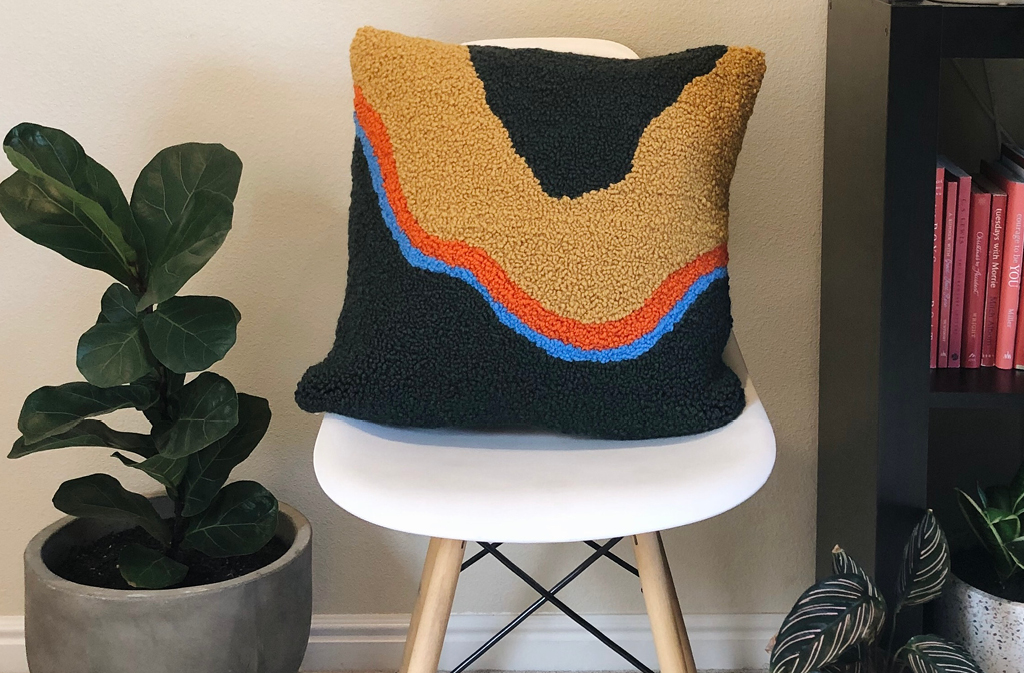
Who would be your dream collaboration?
I would love to do installation pieces for a window display at Anthropologie.
Has Etsy been a good platform for you?
Etsy has been a great platform for me. It has brought me a lot of organic traffic, and it’s been a quick, seamless way to get my designs out into the world. That being said, I am in the process of building a more robust website for Thread Haven now and am excited for that to be finished.
Is this a full-time job for you? And if not, is that a goal for you?
Currently, Thread Haven is a part-time job. Working as a project manager at a creative design studio and doing Thread Haven is working well for me for the time being, but moving Thread Haven to full time would be really exciting and fun, and it’s definitely a goal of mine.
For more info, visit @threadhaven on Instagram
